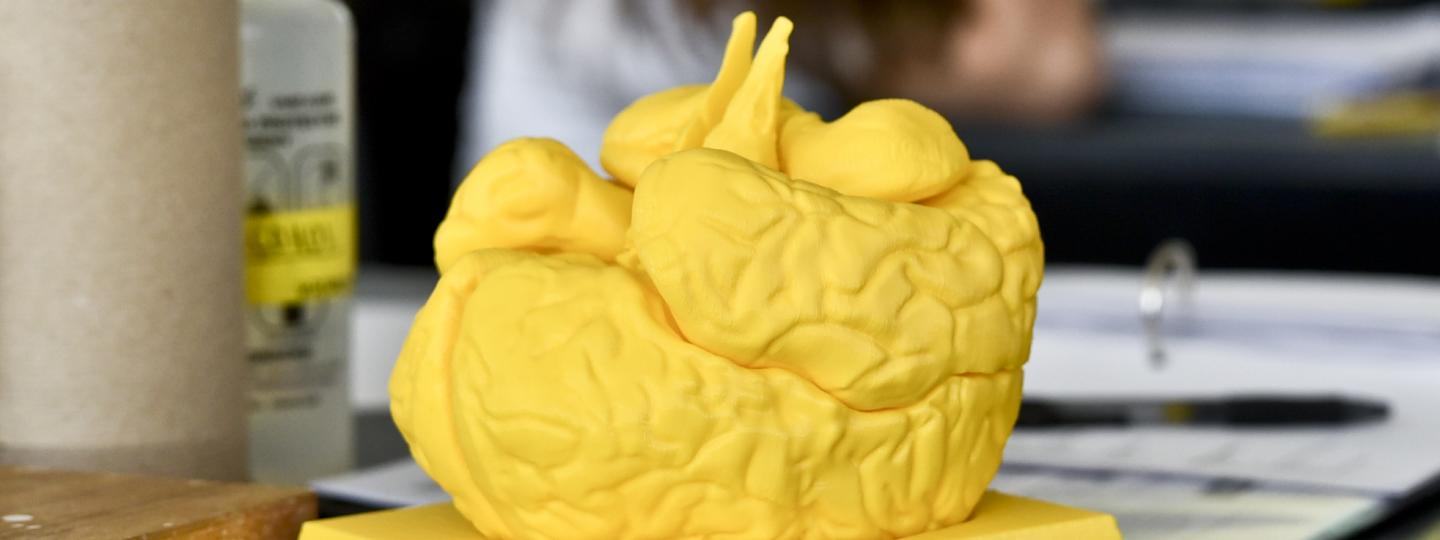Brains Made to Order

Problem solving comes in all shapes, sizes, and situations. In this case, the San Jacinto College South Campus anatomy and physiology students needed more brain models for their two lab classrooms.
Sharing one model among a table of six students was becoming cumbersome. One model cost $363, and to supply both lab classrooms the total would be $6,532. There had to be a more cost-effective solution.
Enter the engineering students. After months of collaborating and researching between the two groups, the end results came out even better than the vendor models, and came to a grand total of just $17 a model, saving the College $6,226. When need meets innovation, the possibilities are endless.
"I had seen a 3D printing demonstration a year beforehand, so I wondered if it was possible to have a few brain models printed in one of our engineering labs," said Dr. Sheema Nasir, San Jacinto College biology and anatomy and physiology professor. "I thought I could give information of what I needed to one of the engineering faculty, and that would be it, but Dr. Gomez had another idea."
"We set up an honors course specifically for this project," said Dr. Connie Gomez, San Jacinto College engineering professor. "I thought this would be a great opportunity for collaboration between our students. Our engineering students are so familiar with structures and buildings, so building a brain, designing something organic, would be a great challenge for them. For the anatomy and physiology students, this would give them a glimpse of knowledge about the tools and technology out there that can help them develop things for nursing, medicine, and a number of other health care fields."
Engineering students Steven Smiddy and Osvaldo Perz took the lead on the project.
"We researched so much about the brain so we could design the models as accurately and as detailed as possible," said Smiddy. "We observed the anatomy students dissect a sheep brain, and we found that we had to find other software programs to design and 3D print the brains. The programs we usually used are based more for buildings, structures, more box-like shapes, so there wasn't too much room to design something that's organic like a brain."
The end result left both Smiddy and Perz feeling accomplished.
"Overall it was a great experience," said Perz. "I learned a lot, and it's great to help out the College any way we can."
For Gomez and Nasir, seeing their students shine is what it's all about.
"We don't realize how important student ownership of a project is. If you ask them about certain aspects, they'll tell you right away, 'Oh, that's my brain,' or, 'Oh, I did the work on that piece.' And they serve as the experts for their portion and can tell you everything about it — what went into the design, their research behind it, etc. Our students have had numerous opportunities to present at conferences, demonstrate the process to our administrators, and other four-year university faculty and administrators."
"It's great to see their sense of pride once it's all completed," added Nasir. "This was such an innovative, collaborative project, and it allowed our students to demonstrate their skills in areas that are quite foreign to them. Ultimately, they all saw how medicine, engineering, and technology will always go hand-in-hand, which will open up so many career options for them."
